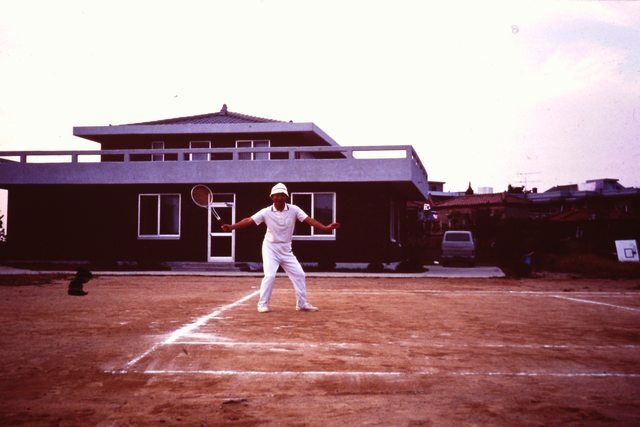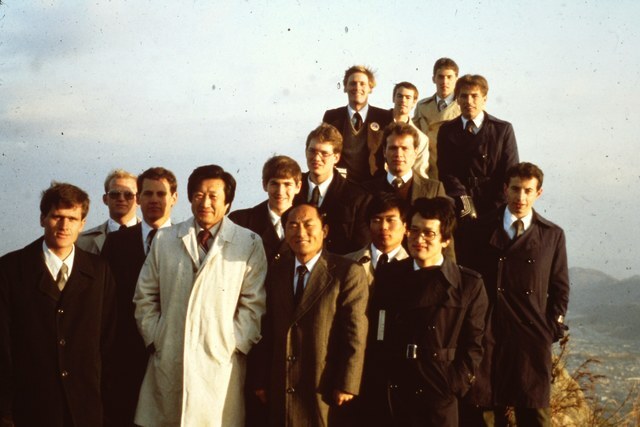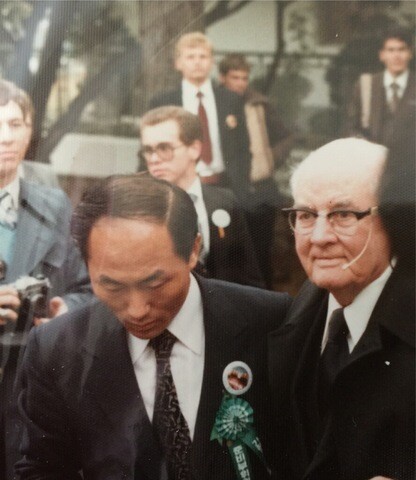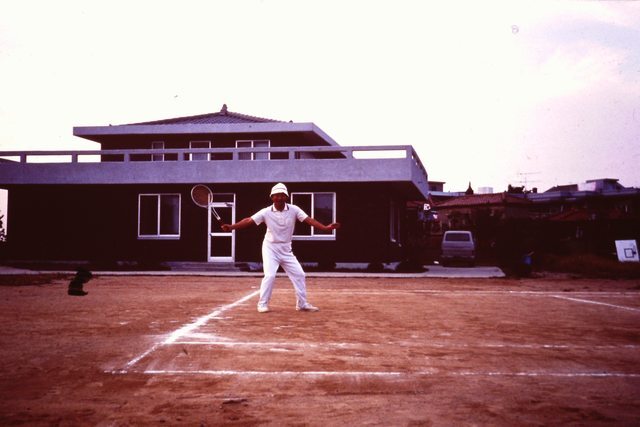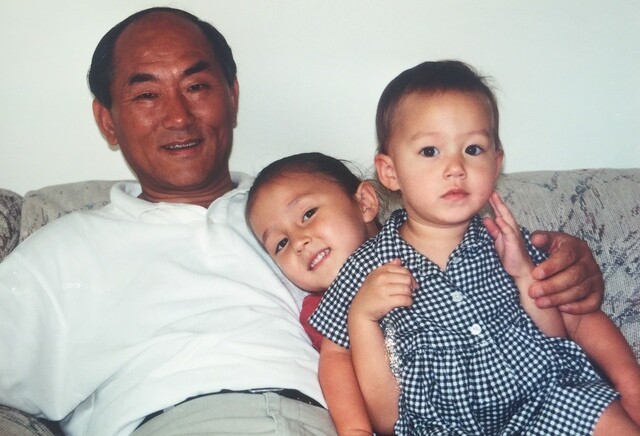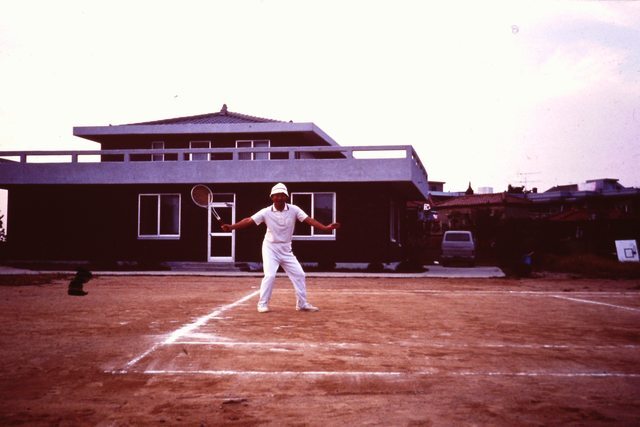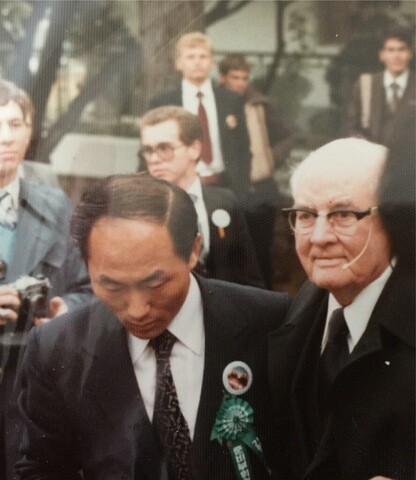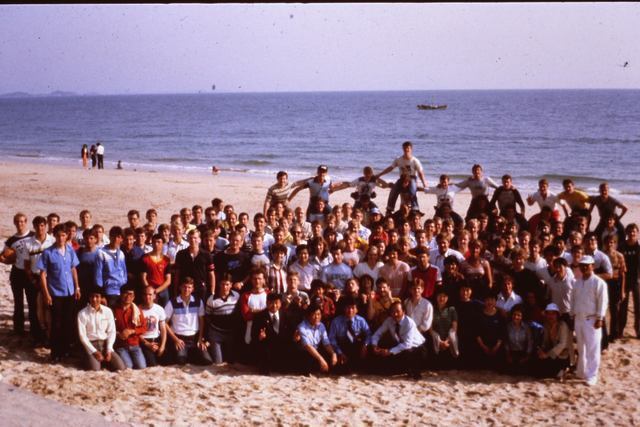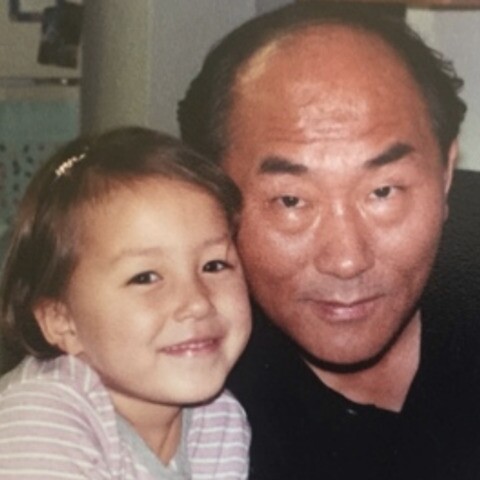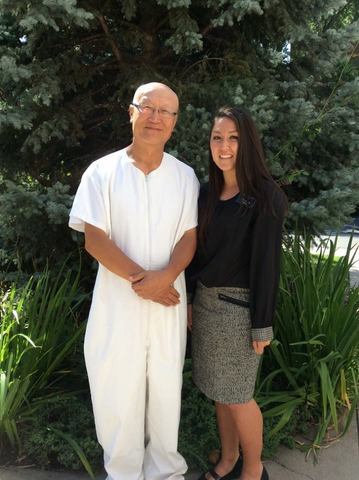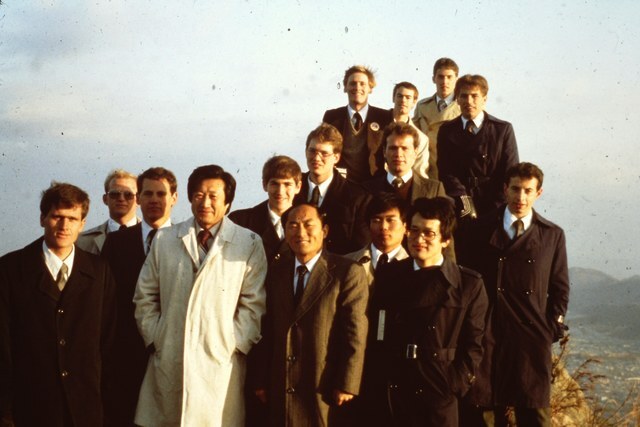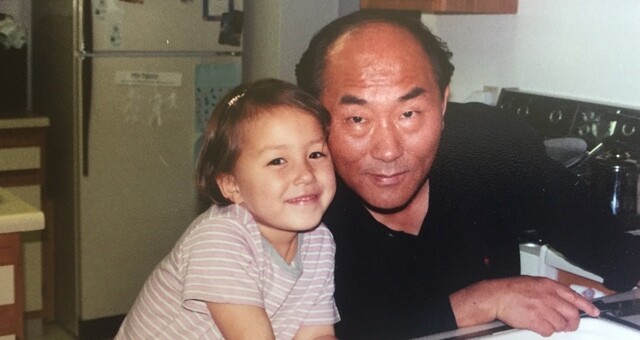If any one of many variables had gone differently, Katie Fitt never would have met Change Lee on a muggy summer night on the streets of Flushing Queens, New York. For starters, Change was originally from South Korea, lived in Canada, but was in New York on business. And Fitt almost didn’t serve a mission. But there she was wearing a black nametag on Northern Blvd when she and her companions approached Change. She doesn’t remember having any sort of special prompting to talk to Change in particular but she simply felt they should talk to one more person before they called it a night. But what happened next might be considered a miracle 55 years in the making.
Kim ChaBong
In early March 1961, Bruce Grant faced a dilemma. The young missionary knew that one more hour remained in proselyting time, but he and his companion had been stood up for their last batch of appointments at the church building that doubled as their residence. Grant recalls, “I’d done more than my missionary duty that day. I’d arisen at 4 a.m., and mandatory turn-in time was only an hour away. There was no more proselyting to be done at that late hour and in that bitter cold. Yet something compelled me to face my junior companion’s ire, something outside myself. ‘Elder, let’s go out and do some street contacting.’ He looked at me with Are you crazy? in his eyes, but I was the senior companion.”
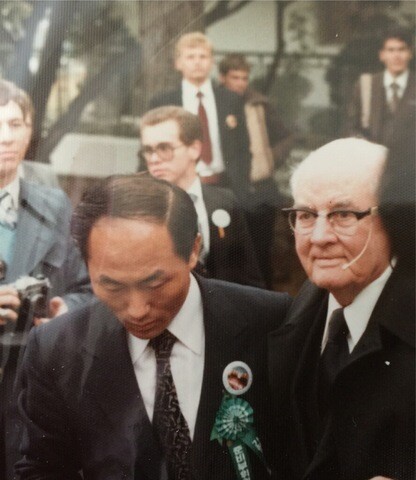
Grant had no way of knowing as they walked into wind that whipped at their faces that they were about to come in contact with a young man who would go on to make an incalculable impression on the Church in South Korea. Even upon seeing Kim ChaBong, he just looked like an ordinary college student, but he accepted the missionaries’ invitation to come inside the church building to escape the cold. That night, Grant and his companion spent over an hour teaching ChaBong about Joseph Smith and his role in restoring the gospel of Jesus Christ. The rest, as they say, is history, as Kim ChaBong went on to become the first native Korean bishop in South Korea as well as a mission president from 1980 to 1983.
“It would be difficult to overstate the enormous impact that President Kim has had on the growth of the Church in South Korea,” says Brad Taylor, who served as a young missionary under Kim during his time as mission president and currently serves as a mission president in South Korea. “His three-year mission president term remains the highest baptizing period in the history of South Korea. Under his amazing leadership, missionaries in Korea were baptizing 2,000 people every year.”
Taylor remembers Kim as “small in stature” but “a spiritual giant.” Kim taught his missionaries to be bold, but he also taught them to love by example.
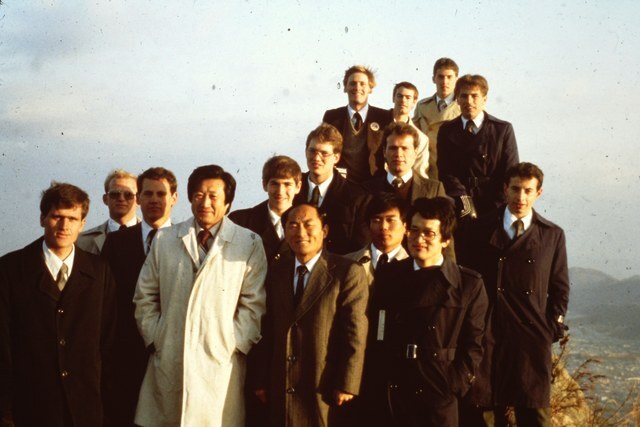
“He was a force to be reckoned with, no obstacle was too big for him, and he had an extraordinary energy and passion for moving the work forward,” Taylor said, recalling that every Friday night, Kim hosted firesides that were open to the public and drew hundreds of people to hear him teach the gospel of Jesus Christ.
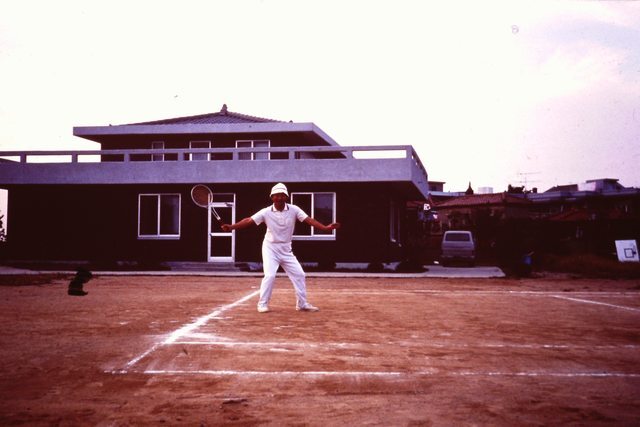
Kim also believed in having fun, often holding mission conferences at the beach. While serving as Kim’s assistant, Taylor recalls his mission president waking him up early one morning and saying in broken English, “Elder Taylor, today we make tennis court!” Today, the Seoul South Korea Temple’s celestial room sits on the very spot where their old makeshift tennis court once stood.
Over 500 people attended ChaBong’s funeral, despite it being more than 7,500 miles from his home in South Korea. As Taylor puts it on behalf of all those whose lives Kim touched, “Those of us who served with him would all like to borrow from Oliver Cowdery and say that ‘Those were days never to be forgotten.’ We miss him with all our hearts, and we will love him forever!”
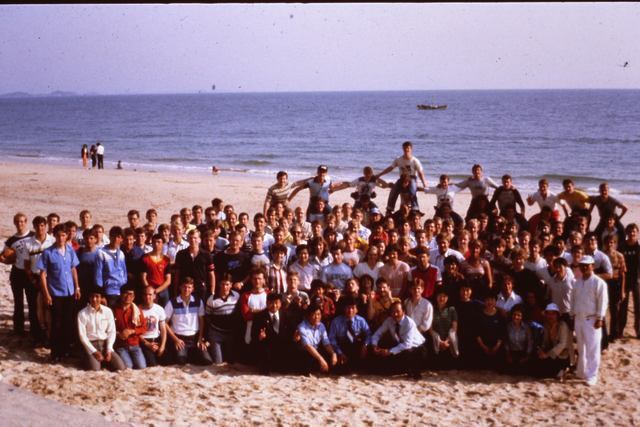
Katie Fitt
For Katie Fitt, playing tennis at BYU was a dream come true. She came to the school as a top 100 tennis recruit—a two-time state champion in the sport. But while registering for classes, Fitt was drawn to the mission preparation class. Her attraction to the class was primarily the appeal of an easy A, but as she listened to Michael Goodman teach about serving a mission, she began to feel a desire to serve herself. When she was injured her freshman year, she wondered if it was a sign that she was meant to serve and if she should just abandon tennis and go on a mission, but her father encouraged her to take the time to recover and make the decision independent of her injury.
She trained for her sophomore year as if she intended to come back to BYU, but she couldn’t shake the desire to serve a mission. She knew what this would mean for her; no female tennis player in the history of BYU sports had left to serve a mission, but tennis was the only thing holding her back from serving. In the end, her coaches promised to hold her spot while she went on a mission but made it clear that remaining on the team would be dependent on her performance when she returned. With that promise, Fitt left on a mission.
Her call to serve a Korean-speaking mission in New York was a thrill, as Fitt’s mother is originally from South Korea, but she soon learned that being a Korean-speaking missionary in the United States was not easy.
“They are amazing and I love them, but they are not very receptive,” Fitt says of the Korean people in Flushing, adding that she and her companions would often street contact for five to six hours each day, talking to hundreds of people. “We found many people that were ready to hear the gospel but almost none of them were Korean.”
When they saw Change Lee, he was walking toward a Korean supermarket. He immediately recognized them as missionaries, which was unusual, and said, “You are the Mormons, right?” And then he continued, “I know all about you. I used to meet with missionaries back in Korea and in Canada. I used to talk with a man named Kim ChaBong all the time about the Church. Talking with him made me actually start believing, but it’s been a long time since I have thought about it.” Fitt was immediately caught off-guard, “Kim ChaBong?” she asked, “That is my grandfather.”
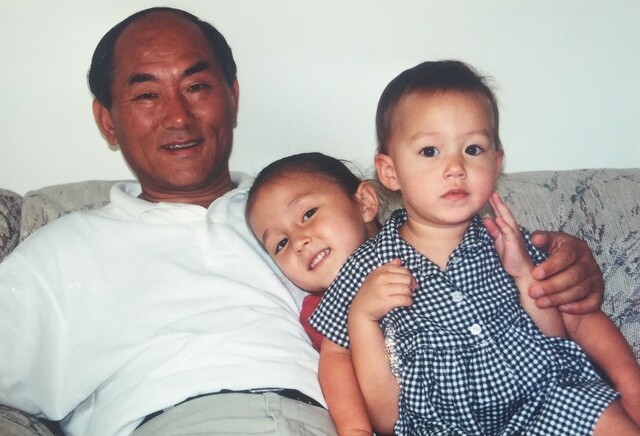
But Change just kept talking, “Kim ChaBong was a mission president in Korea. He really is a wonderful man. I learned a lot from him. He wrote a book I studied a lot as well.” Meanwhile, Fitt was blown away. In a city of over 8.5 million people, she had run into someone her grandfather had taught over 30 years earlier in another of the world’s largest cities nearly 7,000 miles away. “Wow, this is incredible that you really know my grandfather,” she said in an attempt to help Change recognize the miracle they were experiencing. “Kim ChaBong is Korean, you are not,” Change said. His assessment made sense. Fitt’s father is American, so she bears an American last name along with an appearance that is easily mistaken as full-American, but she knew how to prove her identity and pulled out the family picture she carried with her. Change was convinced of her relation to Kim ChaBong and was kind to the missionaries, but respectfully declined when they asked for his contact information. Fitt persisted. She told him she just wanted to tell her parents about the coincidence of meeting him and would love to keep in touch. He finally relented but made it clear that he had no interest in the Church.
That night before bed, she told her companions that she felt she should text him. They reminded her that he was pretty adamant about not wanting to be bothered, but Fitt still didn’t believe their meeting was a coincidence. “Do you realize he knew my grandpa?” she responded. They finally determined they had nothing to lose, so Fitt sent a simple text telling Change how nice it was to meet him and that they hoped he had a safe flight back to Canada. They had no expectation of a reply, but the next morning she and her companions woke to a text from him.
“He had been lying in bed for hours and couldn’t sleep because he felt that meeting us really wasn’t a coincidence. Out of the millions of people in the world, it didn’t seem possible that we just happened to run into each other. He really felt that maybe it was fate or destiny,” Fitt recalls.
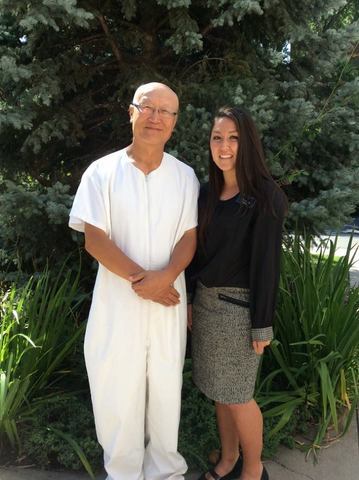
Fitt and her companions met with Change later the following day and he was baptized just a few weeks later on September 17, 2016.
“I was able to witness the baptism of my grandpa’s investigator,” Fitt wrote after returning home from her mission. “I know my grandpa was there watching from above and overjoyed that Change had finally made the decision to follow Christ’s example.”
Planting and Harvesting Seeds
While Katie Fitt was serving as a missionary, her mission president knew that not all areas or assignments in his mission were created equally in terms of teaching opportunities, so he felt inspired to add a new number for the missionaries to report each day: seeds planted.
This meant that missionaries kept count of any time they were able to offer someone the gospel of Jesus Christ in some way. Fitt recognizes this as what her grandfather did 30 years earlier.
“Change Lee being a seed 30 years prior and now finally blooming gave everyone hope that miracles like this really do happen,” Fitt says. “We will never know exactly how many of the seeds that we plant—even if it is just a pass-along card where you might not even get to say anything—will end up.”
Lee’s is a story that spans decades, a story of a grandfather planting and his granddaughter “plucking up that which is planted.”
“I feel that President Kim taught me humbly and reverently and that he had a profound understanding of the Bible and the Book of Mormon,” Lee says of Fitt’s grandfather. Of her, he adds, “Katie was such a hardworking missionary. The constant smile on her face and her enthusiasm for life are infectious. I truly love President Kim ChaBong and his granddaughter.”
Two and a half years later, Change is an active member of the Church in Canada and says the gospel has continued to teach him many things that have enriched his life.
“I’ve been blessed by having the guidance and fellowship of missionaries and members. . . . I’ve also learned many important truths, such as the visit of the resurrected Christ to the American continent to teach His gospel,” Change says. “I was also excited to learn more about the degrees of glory that are available to those who live a faithful life on earth. I also learned about the benefits of the Word of Wisdom. Proxy baptism for the dead taught me that Christ is saving both the living and the dead.”
Meanwhile, Fitt has had plenty of time for this experience to sink in. Today, she recognizes it as a manifestation of God’s love, both for her and for Change Lee:
"This story is a story that I can hold onto forever because any time anything goes wrong or [I’m] discouraged, it helps to remember that God was so involved in the process of Change Lee being baptized, from bringing so many different people to his life to the little detail of meeting my grandpa’s granddaughter in New York. "And then also, I feel like Heavenly Father was so aware of me too on my mission, because although we tried not to get discouraged, it was hard not having a lot of people to teach . . . and so it just felt like Heavenly Father was blessing the whole branch, blessing us as we tried not to give up and tried to have faith in finding."
Fitt concludes, “It’s not just me, [Heavenly Father] loves every individual equally…so much that no matter what we’re going through, He is aware, and He has a plan for us.”
